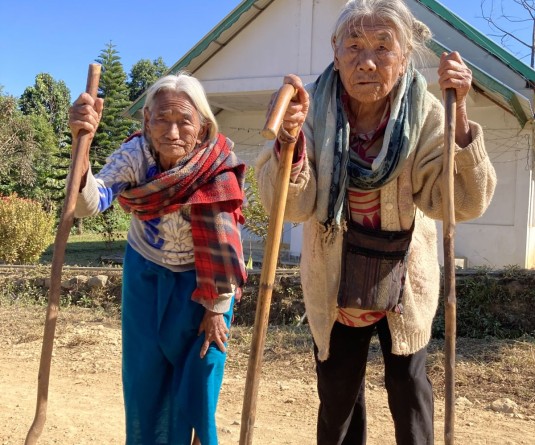
Dr Priyatam Anurag
Misappropriation of Naga cultural symbols in marketplaces such as e-commerce sites and fashion events has raised concerns about the distortion and misrepresentation of Naga culture. The perceived violation of the cultural symbols has prompted steps by the state government to protect the cultural artefacts of the community using legal provisions such as Intellectual Property Rights and Geographical Identification. While policy initiatives for the protection of cultural identity are well-appreciated, the state must complement them with policies to promote cultural entrepreneurship to take advantage of the market potential of authentic Naga cultural artefacts.
As "Risk-takers, Changemakers, and Visionaries", cultural entrepreneurs organize cultural, financial, social, and human capital to generate revenue from a cultural activity. Their innovative solutions result in economically sustainable enterprises that enhance livelihoods and create cultural value and wealth for creative producers and consumers of cultural services and products. Promoting cultural entrepreneurship can regenerate and create new cultural and commercial hubs in Nagaland. Focusing on incubating and nurturing 'cultural startups' would help stimulate investments across multiple areas – festivals, handicrafts, handloom, creative and design industry, advertisements, heritage and public monuments, and visual arts.
A review of successful interventions in cultural entrepreneurship, such as Startup Oasis in Rajasthan, reveals five potential pathways. First, the intervention must build expertise in concept selling using creativity and technology to create a compelling customer story. Second, to take advantage of the premium associated with authenticity, technology for tracing (e.g. blockchain) should be used to ensure end-to-end mapping of the movement of craft items across the supply chain. Third, due attention must be given to creating access to innovative and effective platforms for marketing artisanal products. Fourth, technology should be deployed to strengthen the supply chain and resolve information frictions. Finally, the intervention must be more than a standalone initiative and develop cultural hubs by integrating various artistic and creative industries.
The state government can adopt a 4I approach (i.e. Information, Incentive, Investment and Implementation Support) for ecosystem development for cultural entrepreneurship. Information will provide businesses with the awareness, knowledge, technology and know-how required to operate in creative and cultural industries. Incentives will provide businesses with the impetus to engage with creative and cultural sectors by investing in commons, exploiting spillovers and reducing the cost of doing business. The investment will provide the financial backing to enable firms to venture into challenging creative and cultural industries. Implementation support will provide the logistics, transaction, marketing and communication, and micro-business support services that will allow businesses to function in the dynamic context of creative and cultural industries.
The government can leverage the power of information by taking initiatives such as conducting market research and documenting best practices, and informing and raising stakeholders' awareness about economic, social and ecological issues. It can incentivize engagement with cultural industries by incubating new business models and incentive arrangements and investing in Digital Commons, which may provide a technology stack for entrepreneurs in cultural industries. A digital platform is known to reduce investment and cost for entrepreneurs significantly. The state can bring in investment by promoting partnerships between cultural startups and established businesses (e.g. Fab India) in the cultural industries and by creating an interface between the startups and leading CSR funders. It can provide implementation support by building the capacity of artisanal enterprises through design clinics, market and investor connections and creating a cadre of community professionals from artisan communities to strengthen the engagement of the next generation. Besides, it should also promote self-regulation, standards and certification in sustainable practices. The 4I approach outlined above can help the state develop and appropriate value from cultural entrepreneurship consistent with the ideas of Naga identity.
Dr Priyatam Anurag is a Faculty in Strategic Management at the Indian Institute of Management Lucknow. He has spent several years researching the development issues in Northeast India. The views expressed in this article are personal.




